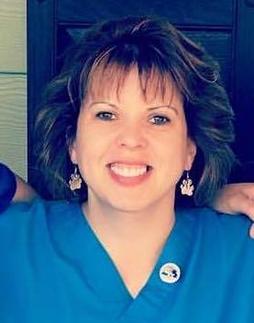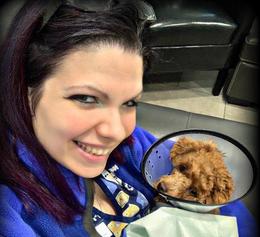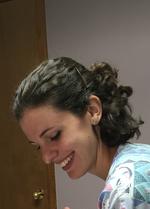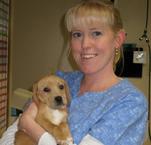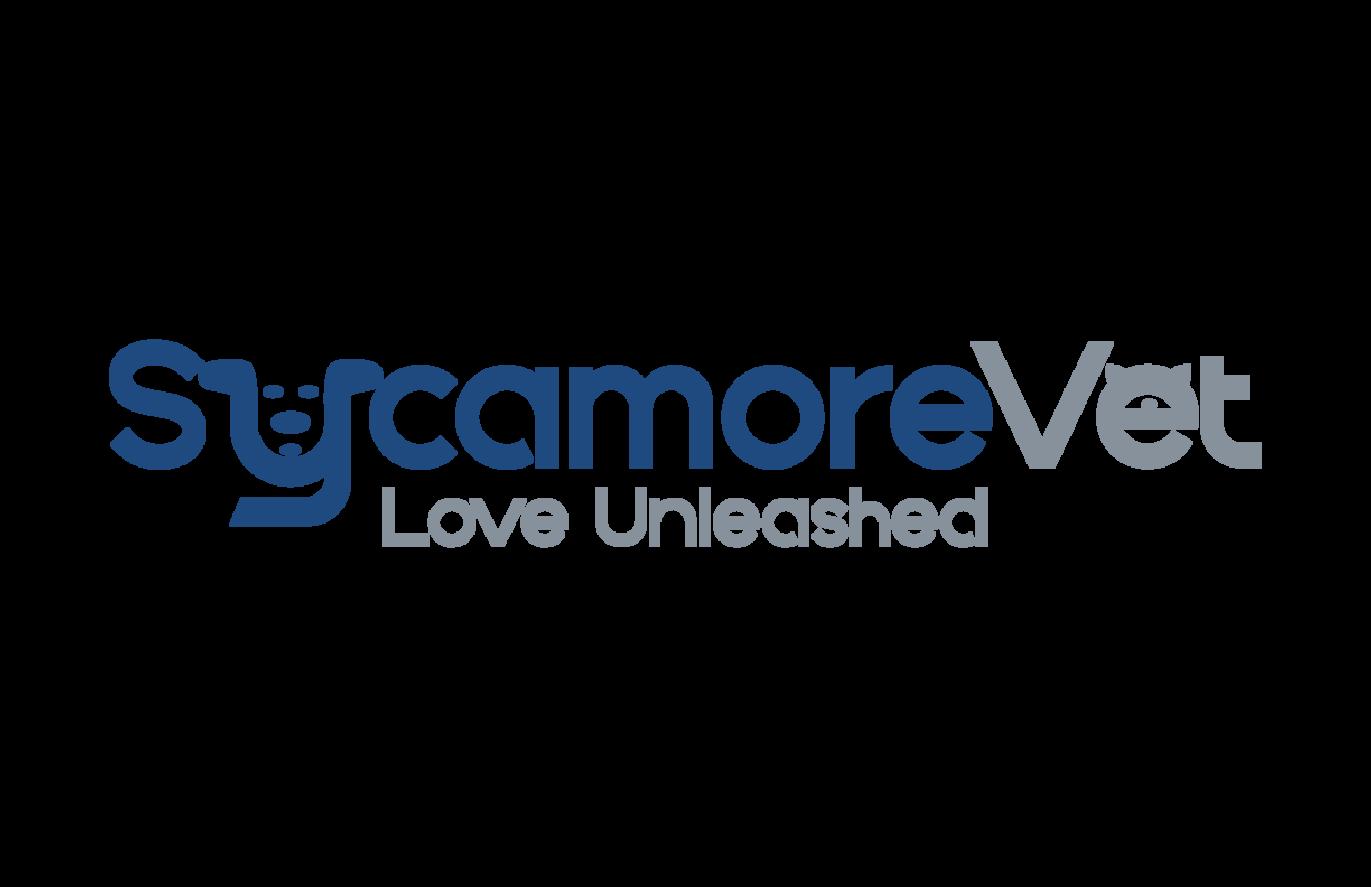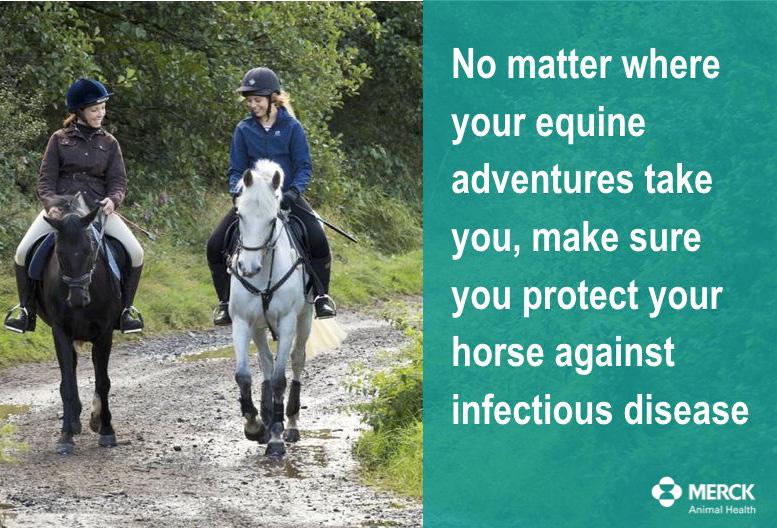FIFTY YEARS of VETERINARY TECHNOLOGY AT BRCC
Fifty years is a long time, and it is truly hard to imagine a world without veterinary technicians. From humble beginnings in 1972 to today, veterinary technology has grown in leaps and bounds, and the BRCC Veterinary Technology Program (VTP) has led the way to progress as a profession.
As the first VTP in Virginia and one of the first in the nation, BRCC set the bar high, and our grads have consistently delivered above expectations. A local veterinarian once noted that the veterinary technician is the greatest advancement in veterinary medicine since gas anesthesia!
While the profession has evolved over the last five decades, so has the program:
• From two small rooms in A building and a tiny shed for kennels with dogs and cats housed in the same space, to an expansive B Building facility with clinical and microscopy labs, surgical suite, radiology room, clinic/prep area and exam room and a classroom. The animal holding facilities on campus now include the H Building kennel with separate facilities for dogs, cats and non-domestic species and the Bowman Large Animal Teaching Facility with stalls, a stanchion, cattle shoot and two pastures with run-in sheds.
• From using a stethoscope to monitor anesthetized patients, to modern multiparameter monitoring equipment that measures heart and respiratory rates, ECG, Blood Pressure, SPO2 and End Tidal CO2. While nothing will ever replace the well-trained vet tech with a stethoscope, keen observation and critical thinking skills, the state-of-the-art monitors provide more information for excellent patient care, safety and informed anesthetic control.
• From a hematology lab equipped with monocular microscopes and simple devices to perform basic blood work and fecal tests, to automated equipment that provides a full spectrum of test results in a fraction of time. Not only can CBCs be performed
4 FIFTY YEARS OF VETERINARY TECHNOLOGY AT BRCC
in the hospital with more information and greater accuracy than the old mouth pipettes/hemocytometer method, but blood chemistry tests are also now done with results in minutes vs days.
• From scaling teeth by hand and brushing with an abrasive, to LVTs performing complete dental cleaning procedures using ultrasonic scalers, power polishers and drills, and digital dental radiography. Dental care has reached new heights, and given that dental disease is the most diagnosed disease in small animals, it is lifechanging for the pets and their people.
• From taking radiographs with film in cassettes and then hand processing the film in a darkroom for 10 minutes to produce wet films for the doctors to read, to digital radiography that produces enhanced images in 15 seconds.
• Who would have thought in 1972 that we’d be using lasers to perform surgical procedures in veterinary hospitals and that laser therapy would be a standard pain management tool?
Veterinary technicians took a leading role in bringing these technologies into the mainstream of veterinary practice and adapted quickly to advances along the way!

5FIFTY YEARS OF VETERINARY TECHNOLOGY AT BRCC
Not only have there been vast changes in what is taught in the program in 50 years, but how the seemingly endless array of material is taught has also undergone dramatic changes. From paper and pencil notetaking to mimeographed notes generated on a manual typewriter, to overhead projectors with 35mm slides to bring images into the classroom and the material to life. With the development of the computer, teaching and learning changed forever. Students initially received printed books of PowerPoint presentations for taking notes and studying. Learning platforms like Blackboard and Canvas have helped eliminate the need for paper copies.
In the 1990s, BRCC was the first program in the US to develop a distance education (DE) program that delivered live classes to remote sites via compressed video. Affiliation with BRCC and Tidewater Community College in Virginia Beach was wildly successful and was later followed by DE classes being held at Brightpoint (formerly John Tyler) Community College, Virginian Western Community College, Virginia Peninsula (formerly Thomas Nelson) Community College, and Germanna Community College- meeting the need for LVTs in these populated areas of the state.
BRCC maintained the DE program in a 3-year rotation at these sites until 2017, when the DE program transitioned to Zoom. This format allowed a new cohort to start every year and today’s DE students do not have to travel to another college to take their classes. Who knew in 2017, that transitioning to the Zoom platform would also

6 FIFTY YEARS OF VETERINARY TECHNOLOGY AT BRCC
enable a smooth adaptation to Zoom for classes and labs during the COVID-19 pandemic?
With all the changes, there have been many constants in the past 50 years, including the unwavering dedication of the faculty, staff, and administration:
• Dr. William Allison saw the VVMAs vision of what a veterinary technician could contribute to animal care, and he guided that vision to fruition as the first program director/instructor in 1972. People like Dr. Stuart Porter and LVT Sandy Martin dedicated over 30 years each to the developing program and the growing role of the veterinary technician in practices across the Commonwealth (and beyond). Without their teamwork, persistence, dedication and high standards of patient care, education, and service, the BRCC veterinary technology program would not be where it is today, serving as the gold standard for the profession.
• Many others have also made significant contributions to the VTP as instructors in lecture and laboratory classes. Dr. Donna Hastings retired last year after 26 years, and her influence here is still felt every day. Dr. Ken Clever served as program director in the early years and later returned to the program as the DE program kicked off and served as the Dean for a time. Drs. Bob Partridge, Steve Soloman, Lynne Stockton, Gael Delong, Ruth Chodrow, Don Henry, Bob Jochen, Jan Larsen, John Jacobson, Katherine Faulkner, Nikki Clayton, Bridget Hickman, Leslie Sheridan, Brad Good, Wynne DiGrassie, Virginia Fint and others have served the program over the years as professors.
• As current program head, Dr. Bret VanLear continues this high level of dedication and commitment.

FIFTY YEARS OF VETERINARY TECHNOLOGY AT BRCC 7
• For many years Sandy Martin held the only LVT position in the program — and seemingly worked magic to have managed all that she did singlehandedly. Gail Foley was the first part-time LVT and Kris Keane joined the team in 2001. The program has been fortunate to have the expertise and contributions of Susan Knipp, Beth Robertson, Katy Melton Simpson, Leslie Cook, Karen Piercy, Stephanie Atkins, Evan Carpenter and Lisa Pultz as program LVTs providing laboratory instruction and support that emulates the role and characteristics of veterinary technicians for BRCC students.
• Dr. James Armstrong was BRCC President when the VTP began; he even taught in the program (parasitology) for a while. Dr. Sears, Dr. Perkins and now Dr. Downey have all been animal lovers and steady supporters of Vet Tech and have nurtured the success of the program alongside the faculty and staff.
• The BRCC Educational Foundation has provided critical support for the program in providing funding for equipment, renovations, staff development and events. Many students have been able to complete their education because of scholarships through the generosity of donors to the Foundation.
The standards of the program have remained high and BRCC students have always risen to the challenge!
This program is rigorous. It is a lot of information in a short amount of time, and students must not only pass each class, but retain all the information in each class. It starts with Anatomy and Physiology and the classes build from course to course.
The program benefited greatly from affiliations with local farms and organizations such as Caring Canine Companions and the Wildlife Center of Virginia. Many students had their first opportunity

8 FIFTY YEARS OF VETERINARY TECHNOLOGY AT BRCC
to interact with farm animals on field trips. The affiliation with the Wildlife Center allowed students to interact with species no other programs had access to. Many students came to BRCC specifically for that exposure and participated in an elective course in wildlife care and management that was offered for a time.
BRCC is proud of the important affiliation the program has maintained with the Virginia Association of Licensed Veterinary Technicians. Many BRCC alumni have volunteered over the years to serve the profession by participating in the VALVT as board members, committee members, or by simply becoming members and volunteering at events.
Students also have developed a very active Vet Tech Club that engages in community service and fundraising to support the missions of local animal programs and organizations. The BRCC Vet Tech Club was recognized as the Student Chapter of the Year by the National Association of Veterinary Technicians in America (NAVTA) in 2011. The Vet Tech Club also received the first ever community service award from the BRCC SGA in 2021-22.
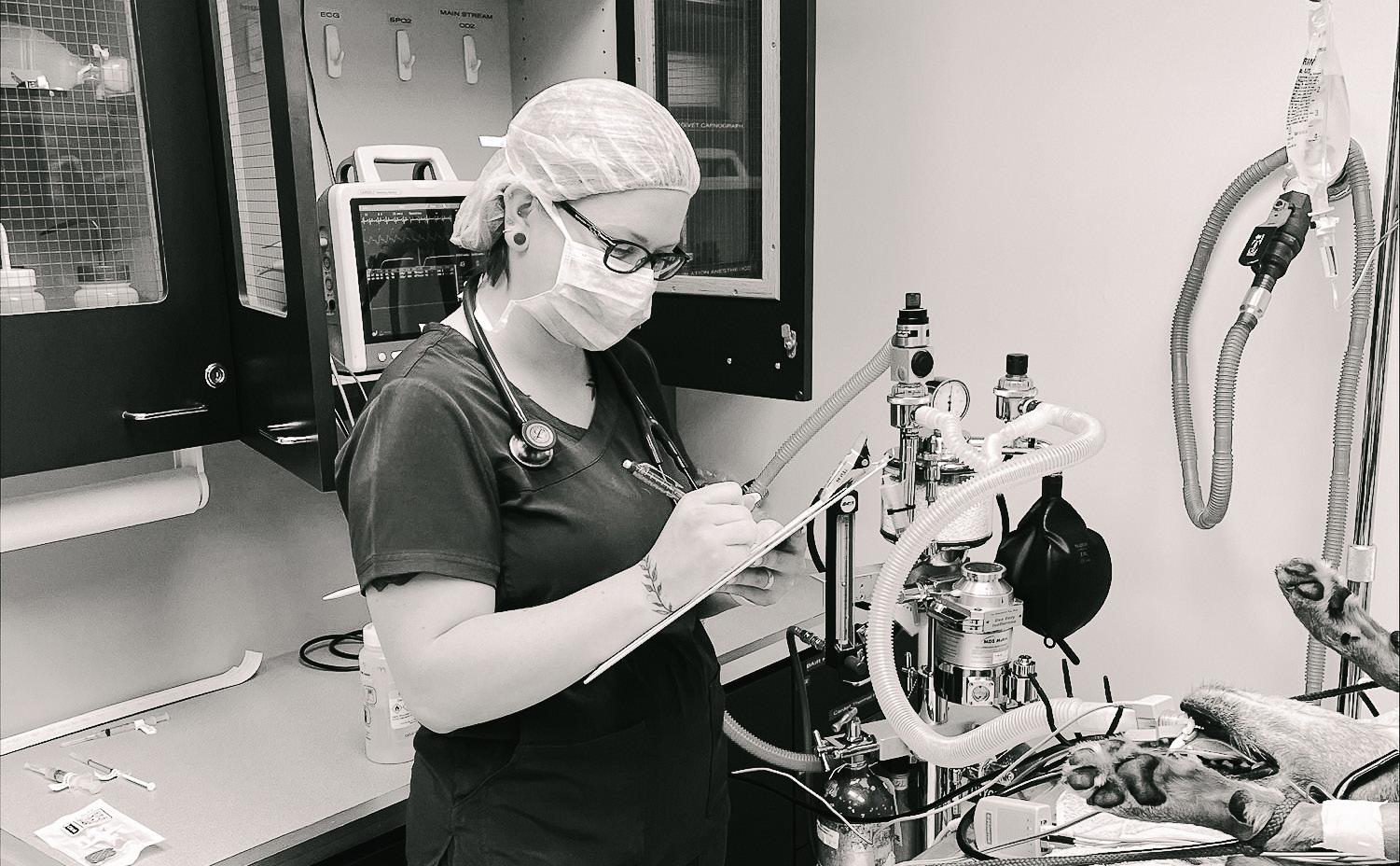
FIFTY YEARS OF VETERINARY TECHNOLOGY AT BRCC 9
BRCC students do it all because they care about their future patients, and they want to make a difference in the world… and they have:
• Graduates work in rural practices in small town Virginia and fast-paced referral centers in Northern Virginia, Richmond or Tidewater, or an equine practice in horse country.
• Graduates are employed in zoos, aquariums, pharmaceutical companies, laboratories, veterinary schools, vet tech and vet assisting programs.
• Graduates are on the cutting edge of advances in veterinary medicine, such as fieldwork in the early years of embryo transfer in cattle or involvement in research at medical colleges and veterinary schools.

• One graduate even worked in remote areas of Vietnam with conservation efforts for pangolins.
• Graduates have also continued their paths to become veterinarians, receive PhDs in affiliated fields, or pursue careers in human medicine.
While the student body has changed over the years, passion is what has brought students to BRCC, and grit is what has gotten them through. Their journey is BRCC’s journey and the graduates of the BRCC Veterinary Technology Program continue to make us #BRCC Proud!
10 FIFTY YEARS OF VETERINARY TECHNOLOGY AT BRCC
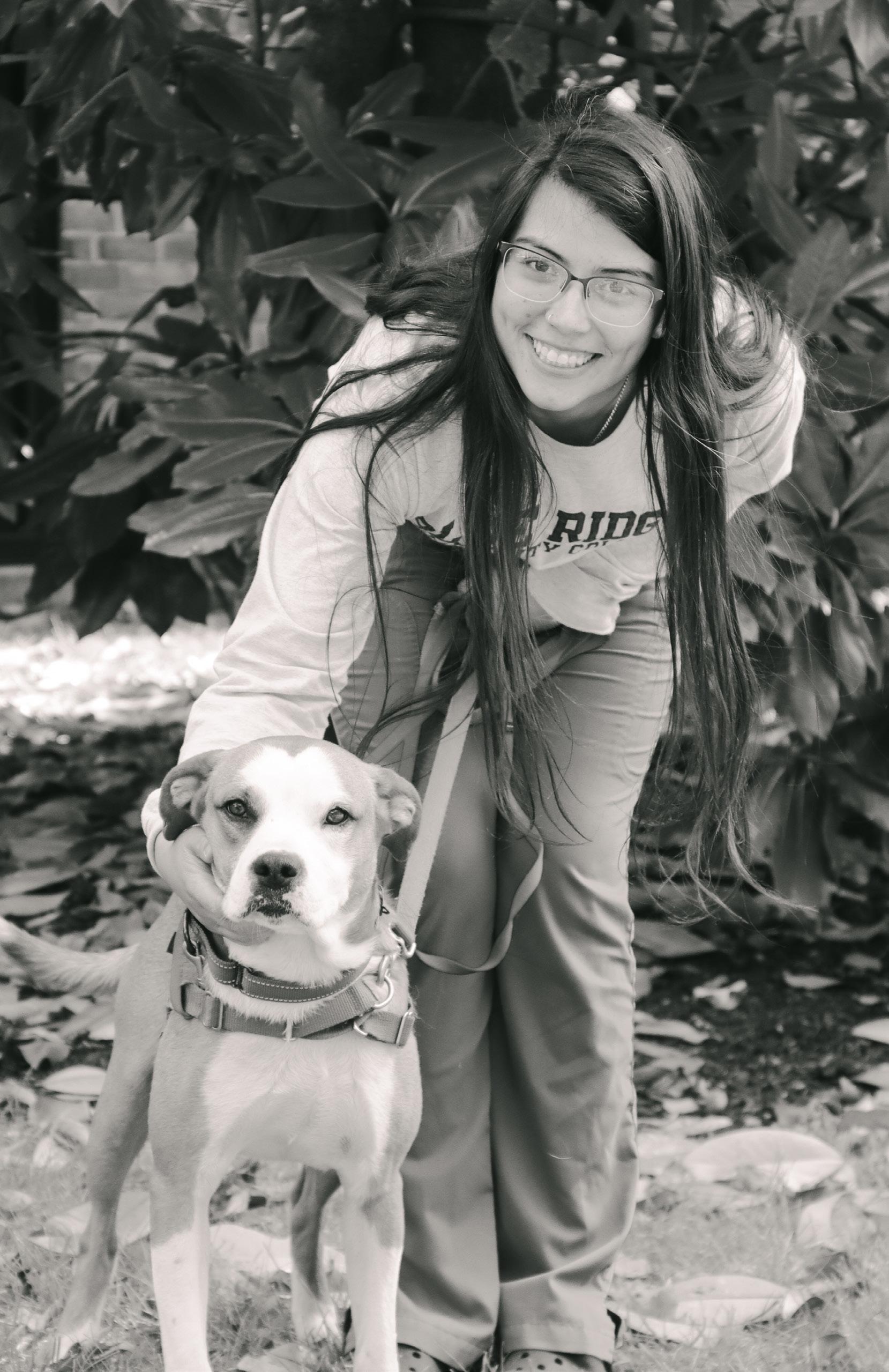
best of the best



